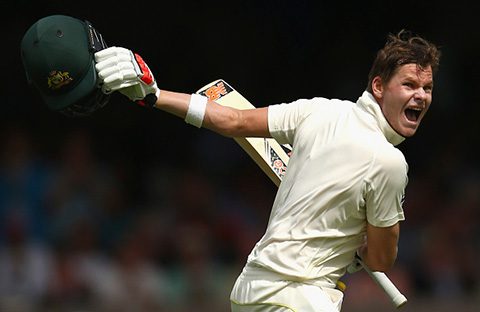Cricket is back, however Australian cricket’s spectacular collapse earlier this year should have alarm bells ringing well beyond the sports boundary, writes William Buck SA Managing Director Jamie McKeough.
The ball-tampering scandal involving one of our most successful men’s sporting teams rocked the nation and tarnished Australia’s ‚Äògolden’ sporting reputation globally.
However this sorry tale involving our once celebrated national men’s cricket team serves not only as a vital case study on culture for elite sports teams, but equally for operators of businesses in any sector.
Small to medium sized businesses in particular can take some very important learnings on managing culture from this episode that can help boost their performance or save them from collapse.
Many Australians no doubt found it quite hard to fathom why a team that was performing so well could resort to cheating.
Yet, from a business stand-point, it’s a prime example of how negative, normative behaviours so entrenched in a culture allowed a leadership team to fail in appropriately addressing an ethical dilemma.
Why is culture so important?
An organisation’s culture is made up of shared values, beliefs and ways of interacting, each needing to be formally recognised and reinforced.
Whether you’re an elite sports team or a family-run business, culture matters.
Successful organisations are identified by their culture, which begs the question; if the cricket team’s culture was so bad, why were they so successful?
The answer lies in the fact that the team’s attitude, short-term vision, and win-at-all-costs ideal did not create the conditions required for what we know in business terms to be ‚Äòsustainable competitive advantage.’
No matter how skilled a team is, culture trumps strategy because culture heavily influences emotions and thus organisational performance in the short to long term.
It’s not good enough to be the best, value should be experienced by all stakeholders.
More than anything this translates directly to the practices of the leadership team or the ‚Äòtone from the top,’ which is characterised by leadership quality and dictates the organisation at the functional level.
It also means ensuring values flow down throughout the organisation.
Cricket Australia had a corporate governance role to ensure the game was properly governed.
A good board should have known the issues and sorted them out. It’s their duty to improve the tone of the top at the national and global level. As discussed in my last article, boards and their members must adapt to stay ahead of the game, or else fail in their duty.
SMEs need to be thinking about the triple-bottom line and how they can improve their environmental, social and governance factors to achieve this long-term advantage. This is not just for large corporations.
The underlying premise of this is accountability for actions and demonstrating transparency.
Leading by example
Even the most highly-skilled and remunerated people, need good leadership.
Leaders communicate both the cultural and the ethical climate. The behavioural example a business owner sets, has the same, if not more impact than the CEO of a major corporation.
Negative behaviours can tear an SME apart, without the luxury of being ‚Äòtoo big to fail.’
‘Ethical signals’ are given by leaders, influencing employee behaviour and decision making. This means culture should be a management priority because they are accountable for creating and sustaining conditions where people act appropriately.
A study on organisational culture in sporting teams published this year, highlighted the need to formally recognise culture and the importance of establishing and reinforcing values as a tangible component of good management.
As an example, while the cricket team’s Code of Conduct stipulates ball tampering is against the rules, even Australia’s longest-serving test captain Allan Border, discussed how altering ball integrity has been a constant since the 1970s.
A code of ethics needs to be lived and breathed. It also needs to be both principled and policy based.
Furthermore, the study recognised that flatter structures allowed for collective leadership and improved performance outcomes. These learnings are relevant to SMEs.
In my experience, owners of an SME will often make all the decisions. While they may have flatter structures, they don’t utilise these within their management or communicative styles, thereby restricting two-way communication flows or collective decision making.
The ethical decision-making that took place in the cricket team was highly dependent on the culture. Captain Steve Smith and Cameron Bancroft confessed that the strategy was pre-meditated and permissible by the ‘leadership group.’
Smith held all the responsibility and in making decisions gave the most inexperienced test cricketer (Bancroft) the order to execute the wrong decision – and Bancroft did it.
How did this happen?
The team’s cultural system focusing on KPIs, as well the top-down style of management, had contributed to unethical messages sent out to the youngest team member.
The climate had produced a low standard of social conduct and the pressures from superiors and peers influenced Bancroft’s ethical choices and emotions, impeding both his personal and professional interests.
When faced with dilemmas, although rules and procedures are crucial, culture takes precedence.
Perceived expectations of behaviour, the behaviour of colleagues, and more specifically, the behaviour of managers have a significant role in the decision-making process.
It was these conditions of culture within the team, that led them to believe ball-tampering was an acceptable course of action.
Creating culture in processes
A positive socialisation process contributes to organisational effectiveness.  
 When newcomers find their identity in a new team they go through a process of socialisation. The process of socialisation helps to alleviate emotional vulnerability; strengthen social interaction between employees and fast-track newcomers learning and adjustment to their new environment.
Peer relationships and mentors are important in this process, as well as ‚Äòheroes’ in the organisation who typify the organisation’s values.
The silver lining
While Australia’s cricket team faces a long road back to the top, there is light at the end of the tunnel for any organisation that suffers a setback.
The silver-lining is that culture is not static, but changeable with clear, open communication.
This can start with a cultural audit to improve the way an organisation thinks and acts.
Creating good culture means aligning the vision, values and beliefs from the top to the bottom.
Managers can create a strong culture and group cohesion through identity communication and sharing tangible and intangible culture and ethos.
While culture is considered intangible, it is made tangible through written and expressed values, and cyclical feedback. This will ensure cultural values are instituted and reinforced through the communication network.
It will also prevent negative behavioural practices from festering to the point of no return.
Jamie McKeough is the Managing Director of William Buck in South Australia. He can be contacted at jamie.mckeough@williambuck.com or 61 8 8409 4333.




































